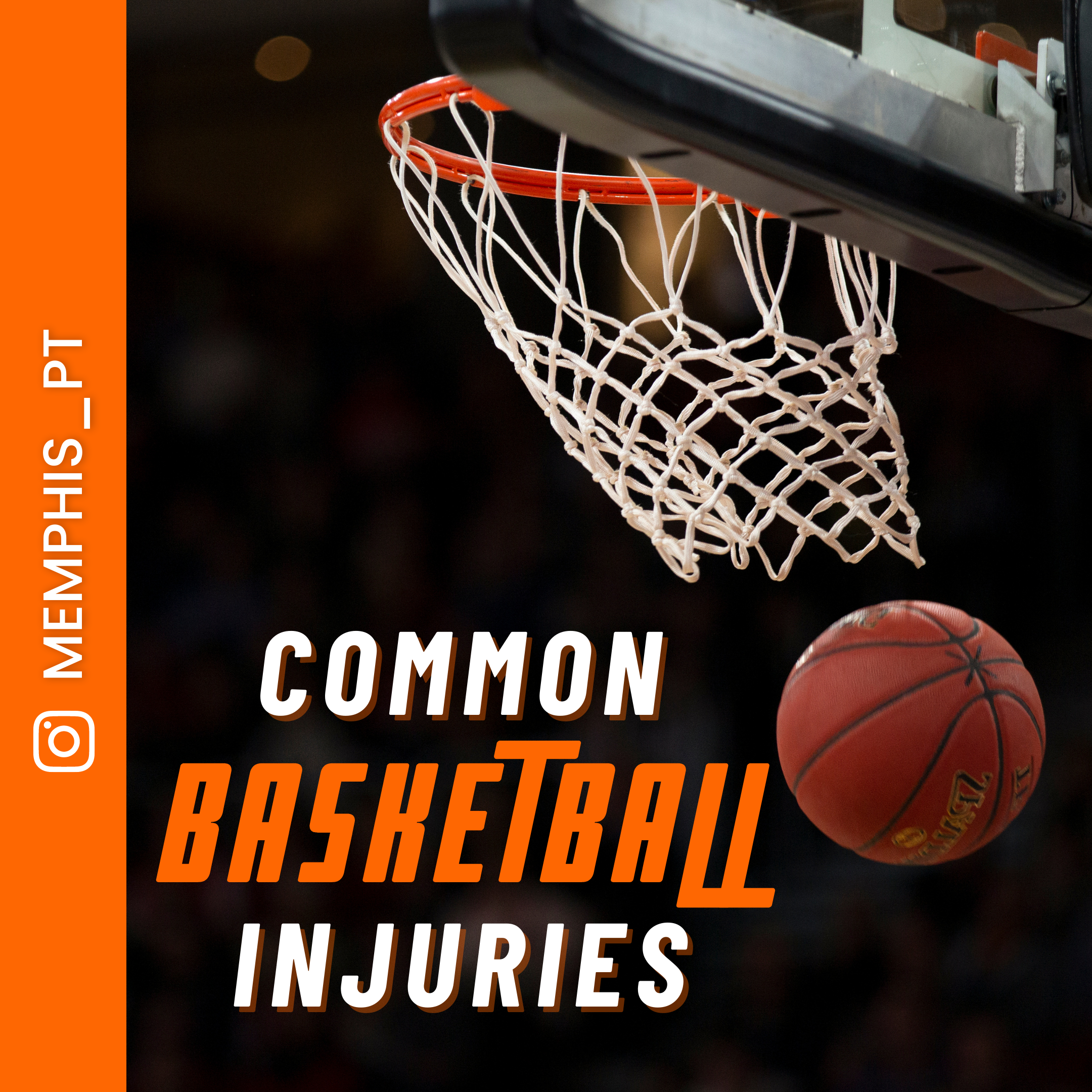
Injuries can happen to college and professional players as well as recreational athletes. Physical therapists are adept at working with patients suffering from common basketball injuries and can help in a variety of different ways.
Common Basketball Injuries
Ankle sprains are easily the most common injury in basketball. An ankle sprain is a partial or complete tear of the ligaments that support the ankle. Ankle sprains may be caused by falling or sudden twisting of the ankle, such as:
- Stepping on an uneven surface or in a hole
- Taking an awkward step when running, jumping, or stepping up or down
- Having your ankle roll over when playing sports or exercising is called inversion of the foot.
Depending on the severity of the injury, it can take anywhere from a few days to a few months to properly heal an ankle sprain.
Treatment for an acute ankle sprain is based primarily upon RICE protocol: Rest, Ice, Compression, and Elevation. You should rest your injury for the first two to three days. If you’ve injured your leg or foot you may need to use crutches to remain mobile. Then reduce movement gradually so you don’t delay your recovery by losing muscle strength. Ice the painful area with a cold compress such as ice or a bag of frozen peas wrapped in a towel. Icing will help reduce swelling and bruising. Do this for 15 to 20 minutes every two to three hours. You should not apply ice directly to your skin as it can damage it. Compress the injured area with an elastic bandage or elasticated tubular bandage to help limit swelling and movement. But you should not leave the bandage on while sleeping. Finally, you should elevate your injury by resting it above the level of your heart and keeping it supported. This could mean lying on the sofa with your foot on some cushions.
The RICE produced should be followed quickly by a program of exercises and functional training to reduce the likelihood of chronic ankle instability. Balance and “proprioceptive” training are critical components of the rehabilitation process. In the case of a severe sprain and subsequent chronic instability, surgical intervention may be indicated.
Stress fractures are also seen frequently in basketball. A stress fracture is a tiny crack in the bone from chronic overuse. It is typically caused by repeated stress or overuse.
Causes include:
- Increasing the amount or intensity of an activity too quickly
- Switching to a different playing or running surface
- Wearing improper or old shoes
- Stress fractures can worsen by continued physical stress.
Rest is the first thing you can do for a stress fracture. This includes avoiding the activity that caused the fracture and any other activities that cause pain. The rest time required is at least 6-8 weeks. Once you are ready to restart activity your physician may prescribe physical therapy. They may begin with non-weight-bearing activities, such as swimming, cycling, and the use of an Alter-G treadmill. Next, weight-bearing, nonimpact exercises may be prescribed. Gradually, low-impact activities, such as walking, will be added to your treatment. Once you can do fast-paced walking with no pain, your physical therapist will give higher impact activities, such as light jogging.
Running and jumping can put a lot of stress on the knees during basketball and can cause a knee injury. The three most common knee injuries during basketball include ACL tears, meniscus tears, and patella tendonitis. ACL tears may require reconstructive surgery. In some cases, meniscus tears may also require surgery to repair the torn meniscus. Finally, patella tendonitis is another prevalent overuse injury. It can commonly be treated with rest and ice to heal.
Basketball is a sport that requires a lot of passing. Finger injuries commonly occur when the ball hits the top of the finger. This results in finger pain and swelling. Treatment of a finger injury includes the use of ice and taping. Ice helps to decrease pain and swelling. Taping the injured finger with an adjacent finger will help to protect it while it recovers. If pain and swelling persist, evaluation by a hand therapist is recommended. A hand therapist will work to make sure your fingers heal correctly and reduce the risk of long-term damage.
Another common injury in basketball is an Achilles tear. This injury occurs when the Achilles tendon (which connects the calf to the heel) tears. Surgery is recommended in most cases, but occasionally nonoperative treatment is utilized.
Click here for basketball injury prevention tips.
Physical therapy or treatment by a team athletic trainer may be the answer to getting you back on the court as soon as possible. We can help speed up the recovery process and help prevent future recurring injuries. Our physical therapist can rebuild strength and movement after an injury occurs. They will also help improve the range of motion, relieve or eliminate pain, and reduce the risk of future injuries.
